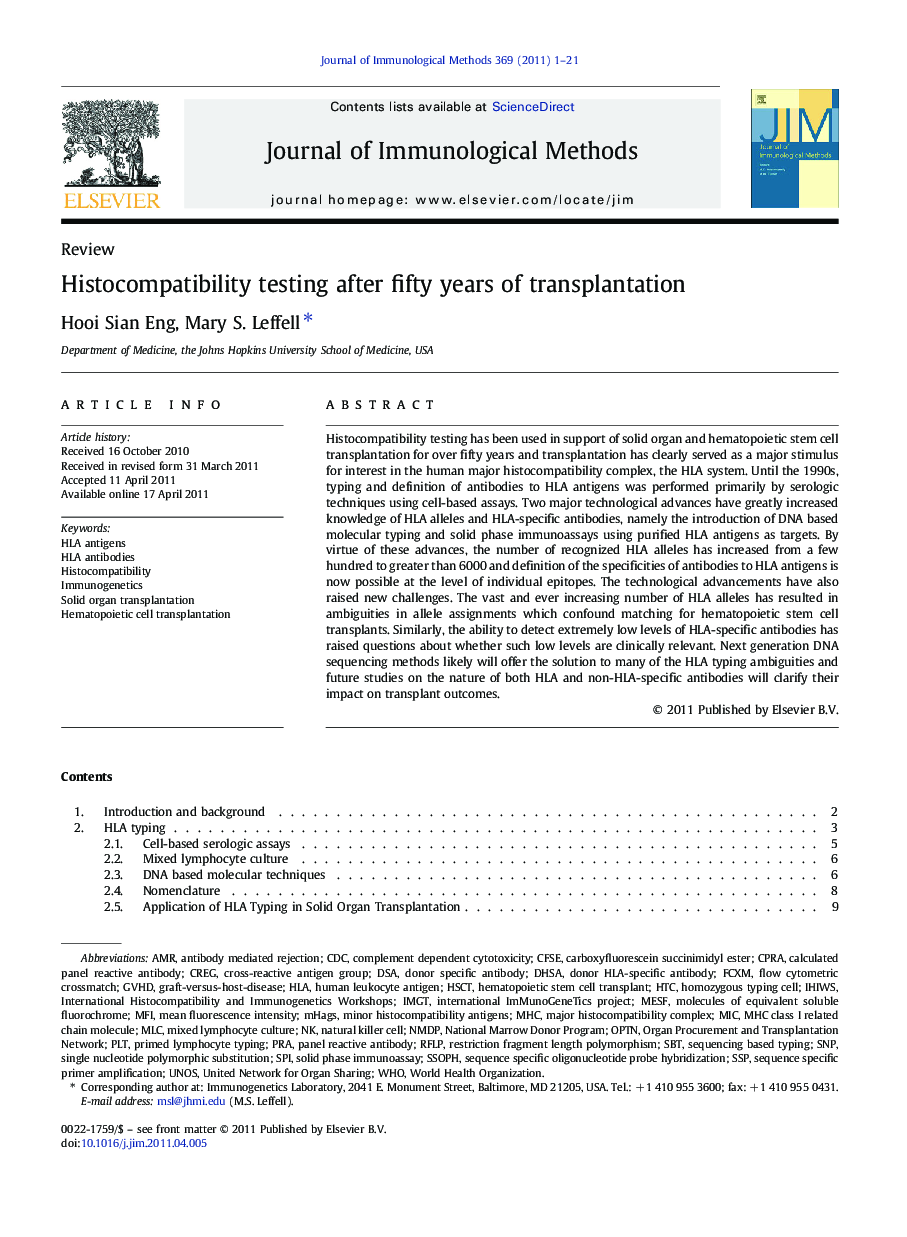| Article ID | Journal | Published Year | Pages | File Type |
|---|---|---|---|---|
| 2088568 | Journal of Immunological Methods | 2011 | 21 Pages |
Histocompatibility testing has been used in support of solid organ and hematopoietic stem cell transplantation for over fifty years and transplantation has clearly served as a major stimulus for interest in the human major histocompatibility complex, the HLA system. Until the 1990s, typing and definition of antibodies to HLA antigens was performed primarily by serologic techniques using cell-based assays. Two major technological advances have greatly increased knowledge of HLA alleles and HLA-specific antibodies, namely the introduction of DNA based molecular typing and solid phase immunoassays using purified HLA antigens as targets. By virtue of these advances, the number of recognized HLA alleles has increased from a few hundred to greater than 6000 and definition of the specificities of antibodies to HLA antigens is now possible at the level of individual epitopes. The technological advancements have also raised new challenges. The vast and ever increasing number of HLA alleles has resulted in ambiguities in allele assignments which confound matching for hematopoietic stem cell transplants. Similarly, the ability to detect extremely low levels of HLA-specific antibodies has raised questions about whether such low levels are clinically relevant. Next generation DNA sequencing methods likely will offer the solution to many of the HLA typing ambiguities and future studies on the nature of both HLA and non-HLA-specific antibodies will clarify their impact on transplant outcomes.
